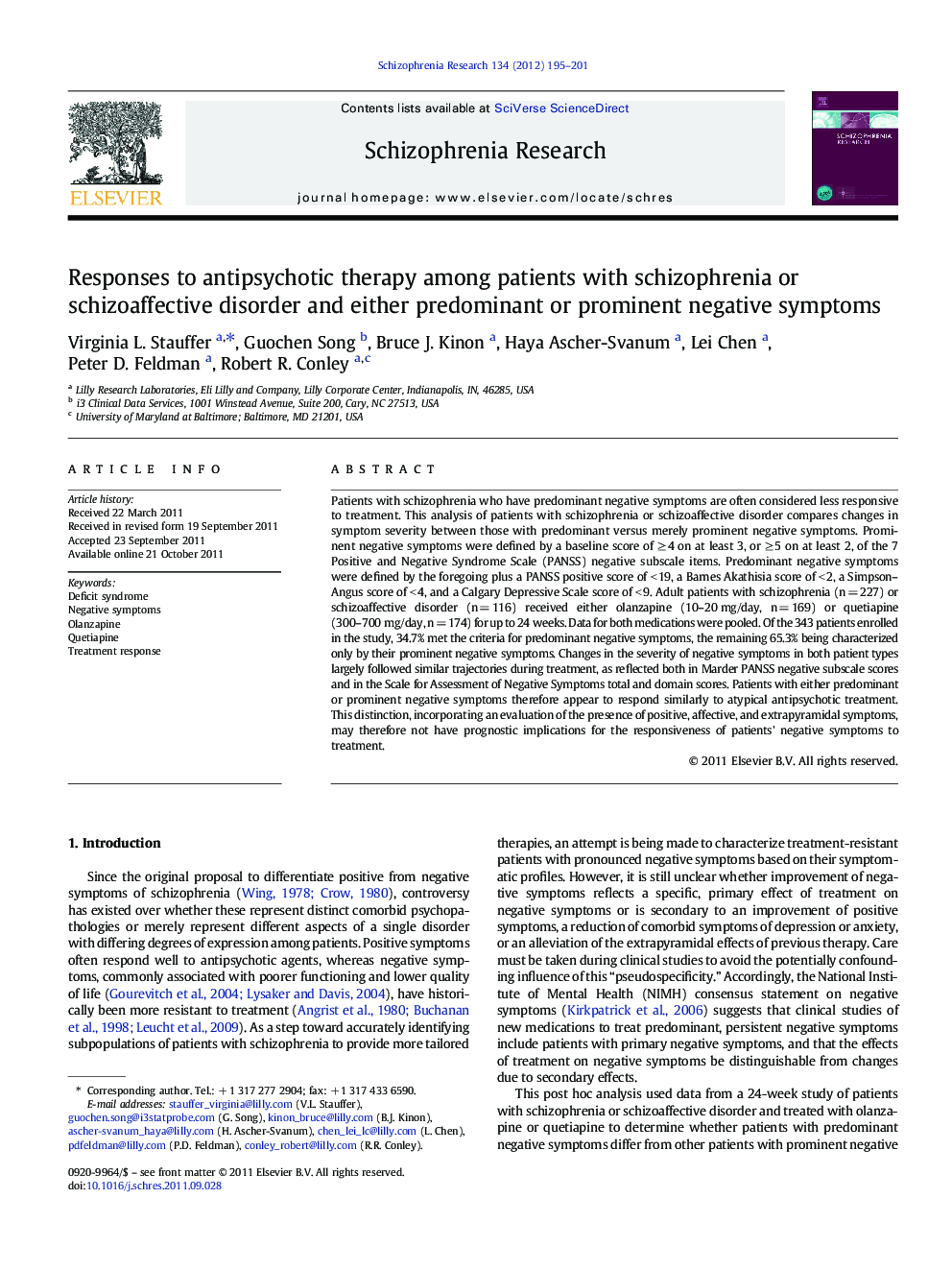| کد مقاله | کد نشریه | سال انتشار | مقاله انگلیسی | نسخه تمام متن |
|---|---|---|---|---|
| 6827334 | 547920 | 2012 | 7 صفحه PDF | دانلود رایگان |
عنوان انگلیسی مقاله ISI
Responses to antipsychotic therapy among patients with schizophrenia or schizoaffective disorder and either predominant or prominent negative symptoms
دانلود مقاله + سفارش ترجمه
دانلود مقاله ISI انگلیسی
رایگان برای ایرانیان
کلمات کلیدی
موضوعات مرتبط
علوم زیستی و بیوفناوری
علم عصب شناسی
علوم اعصاب رفتاری
پیش نمایش صفحه اول مقاله

چکیده انگلیسی
Patients with schizophrenia who have predominant negative symptoms are often considered less responsive to treatment. This analysis of patients with schizophrenia or schizoaffective disorder compares changes in symptom severity between those with predominant versus merely prominent negative symptoms. Prominent negative symptoms were defined by a baseline score of â¥Â 4 on at least 3, or â¥Â 5 on at least 2, of the 7 Positive and Negative Syndrome Scale (PANSS) negative subscale items. Predominant negative symptoms were defined by the foregoing plus a PANSS positive score of < 19, a Barnes Akathisia score of < 2, a Simpson-Angus score of < 4, and a Calgary Depressive Scale score of < 9. Adult patients with schizophrenia (n = 227) or schizoaffective disorder (n = 116) received either olanzapine (10-20 mg/day, n = 169) or quetiapine (300-700 mg/day, n = 174) for up to 24 weeks. Data for both medications were pooled. Of the 343 patients enrolled in the study, 34.7% met the criteria for predominant negative symptoms, the remaining 65.3% being characterized only by their prominent negative symptoms. Changes in the severity of negative symptoms in both patient types largely followed similar trajectories during treatment, as reflected both in Marder PANSS negative subscale scores and in the Scale for Assessment of Negative Symptoms total and domain scores. Patients with either predominant or prominent negative symptoms therefore appear to respond similarly to atypical antipsychotic treatment. This distinction, incorporating an evaluation of the presence of positive, affective, and extrapyramidal symptoms, may therefore not have prognostic implications for the responsiveness of patients' negative symptoms to treatment.
ناشر
Database: Elsevier - ScienceDirect (ساینس دایرکت)
Journal: Schizophrenia Research - Volume 134, Issues 2â3, February 2012, Pages 195-201
Journal: Schizophrenia Research - Volume 134, Issues 2â3, February 2012, Pages 195-201
نویسندگان
Virginia L. Stauffer, Guochen Song, Bruce J. Kinon, Haya Ascher-Svanum, Lei Chen, Peter D. Feldman, Robert R. Conley,